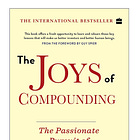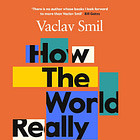Cal Newport's Digital Minimalism presents a radical solution to technology's increasing dominance over daily life: a philosophy of intentional technology use that prioritizes deep values over digital convenience. Her argues that the current approach to technology adoption—casually adding new digital tools without considering their true impact—has created an epidemic of distraction and diminished well-being.
Newport begins by challenging the assumption that technological progress automatically improves life quality. He describes meeting a successful executive who realized that despite having access to more information and connectivity than ever before, she felt less satisfied and more anxious than in previous decades. This paradox reflects what Newport calls the "digital attention economy," where technology companies profit by capturing and holding human attention, often at the expense of users' mental health and productivity.
Newport presents compelling research about technology's impact on mental health and social connection. He cites studies showing that smartphone adoption coincides with rising rates of anxiety and depression among teenagers, and that social media use often increases loneliness rather than alleviating it. Newport talks about the Amish approach to technology adoption. Rather than rejecting all innovation, Amish communities carefully evaluate each new technology against their core values, adopting only those that strengthen family and community bonds while rejecting those that undermine them.
The author proposes a "digital declutter"—a thirty-day experiment where participants eliminate all optional technologies from their lives, then gradually reintroduce only those that provide significant value. Newport shares examples of people who discovered they felt happier and more productive after removing social media apps, news websites, and streaming services. One participant realized that constantly checking news sites provided no actionable information but generated persistent anxiety about world events beyond his control.
Newport explores how digital tools fragment attention, preventing the deep focus necessary for meaningful work and relationships. He describes a lawyer who realized that constant email checking made it impossible to engage in the sustained thinking required for complex legal analysis. After implementing strict email schedules and removing social media, she found her work quality improved dramatically and she could leave the office earlier.
The book addresses the social pressure to remain constantly connected. Newport acknowledges that complete digital hermitage isn't practical for most people, but argues for being more selective about communication channels. He suggests consolidating communication into scheduled blocks rather than maintaining constant availability across multiple platforms. One executive he profiles designated specific times for responding to messages, allowing for uninterrupted focus during peak productivity hours.
The author provides practical strategies for reclaiming high-value activities displaced by digital distractions. He suggests joining clubs, learning skilled hobbies, and engaging in face-to-face social activities. Newport shares the story of a programmer who replaced evening Netflix browsing with woodworking, discovering greater satisfaction in creating tangible objects than consuming digital entertainment.
Newport concludes by arguing that digital minimalism isn't about rejecting technology but about using it more intentionally. He envisions a future where people approach new technologies with the same careful consideration they might apply to major life decisions, adopting only those tools that genuinely enhance their most important values and relationships.
Digital Minimalism ultimately presents technology as a powerful tool that requires wisdom to wield effectively, arguing that the key to thriving in the digital age lies not in keeping up with every innovation but in being selective about which innovations deserve a place in one's life.
Get the book : USA | India | UK
Check out the previous books we’ve covered:







